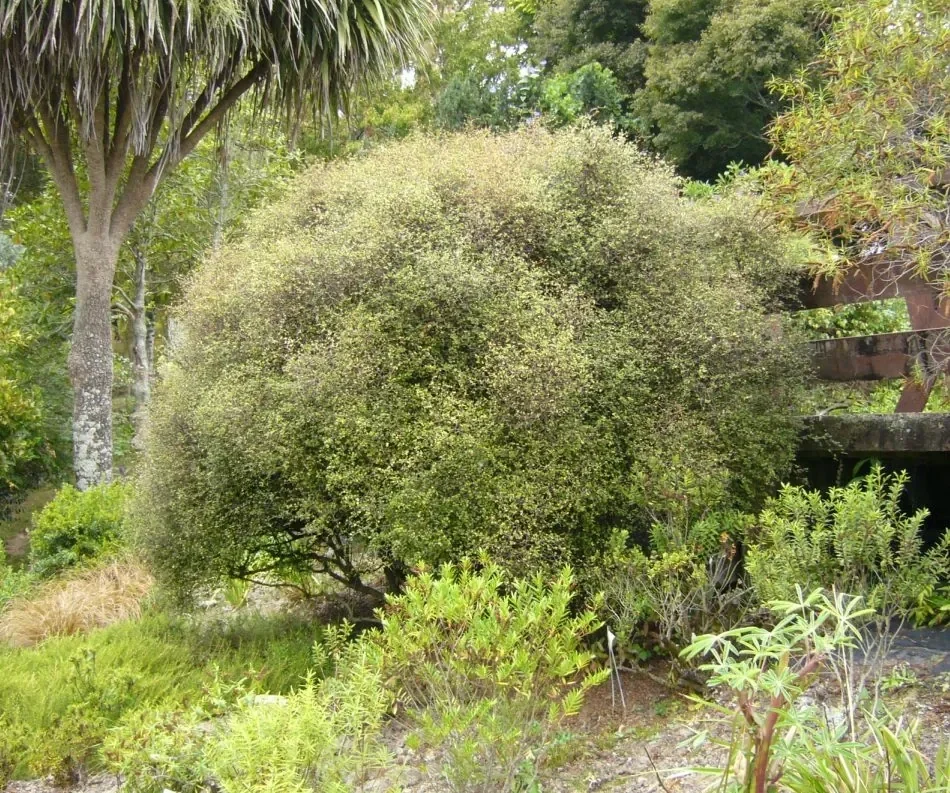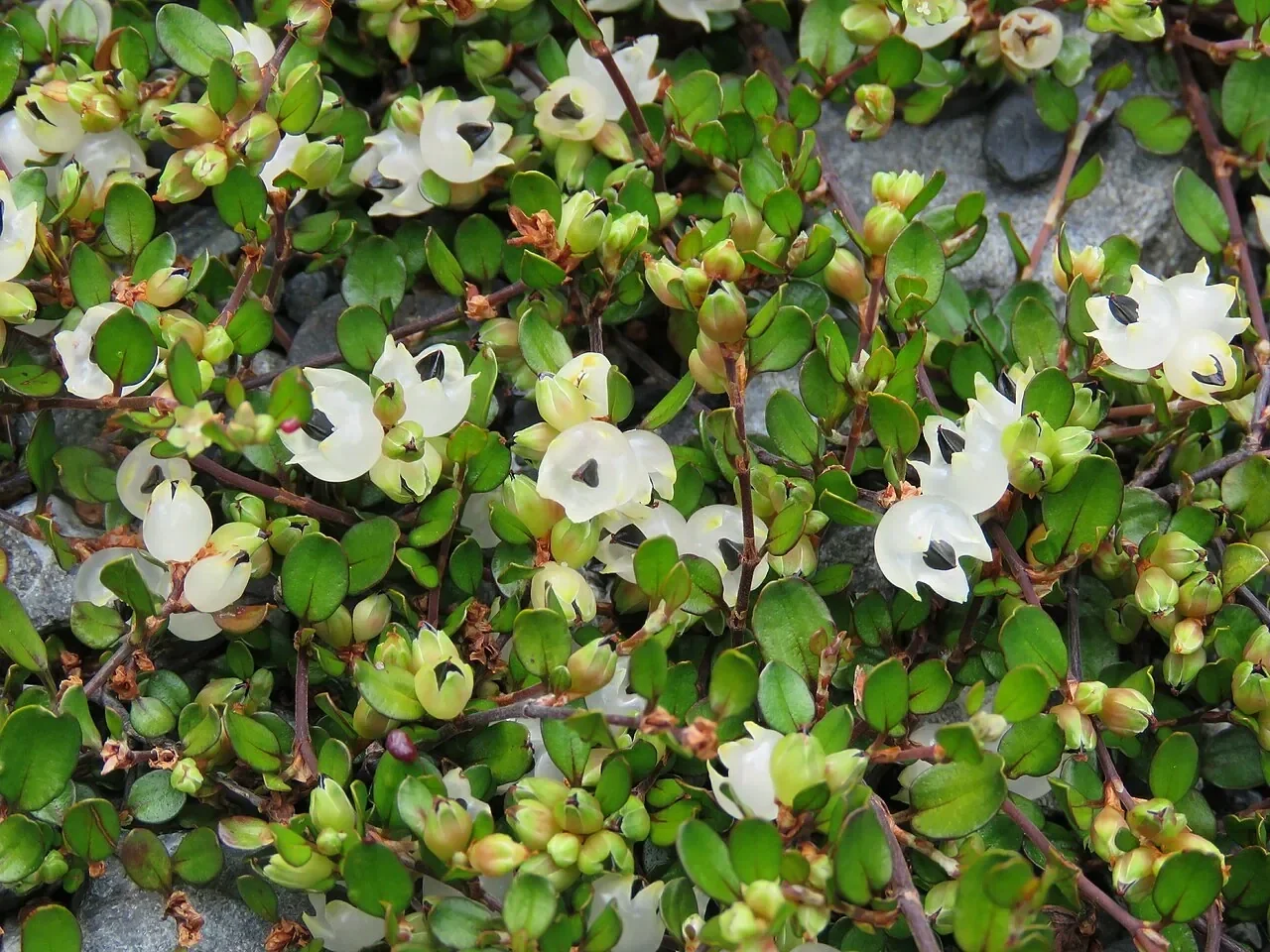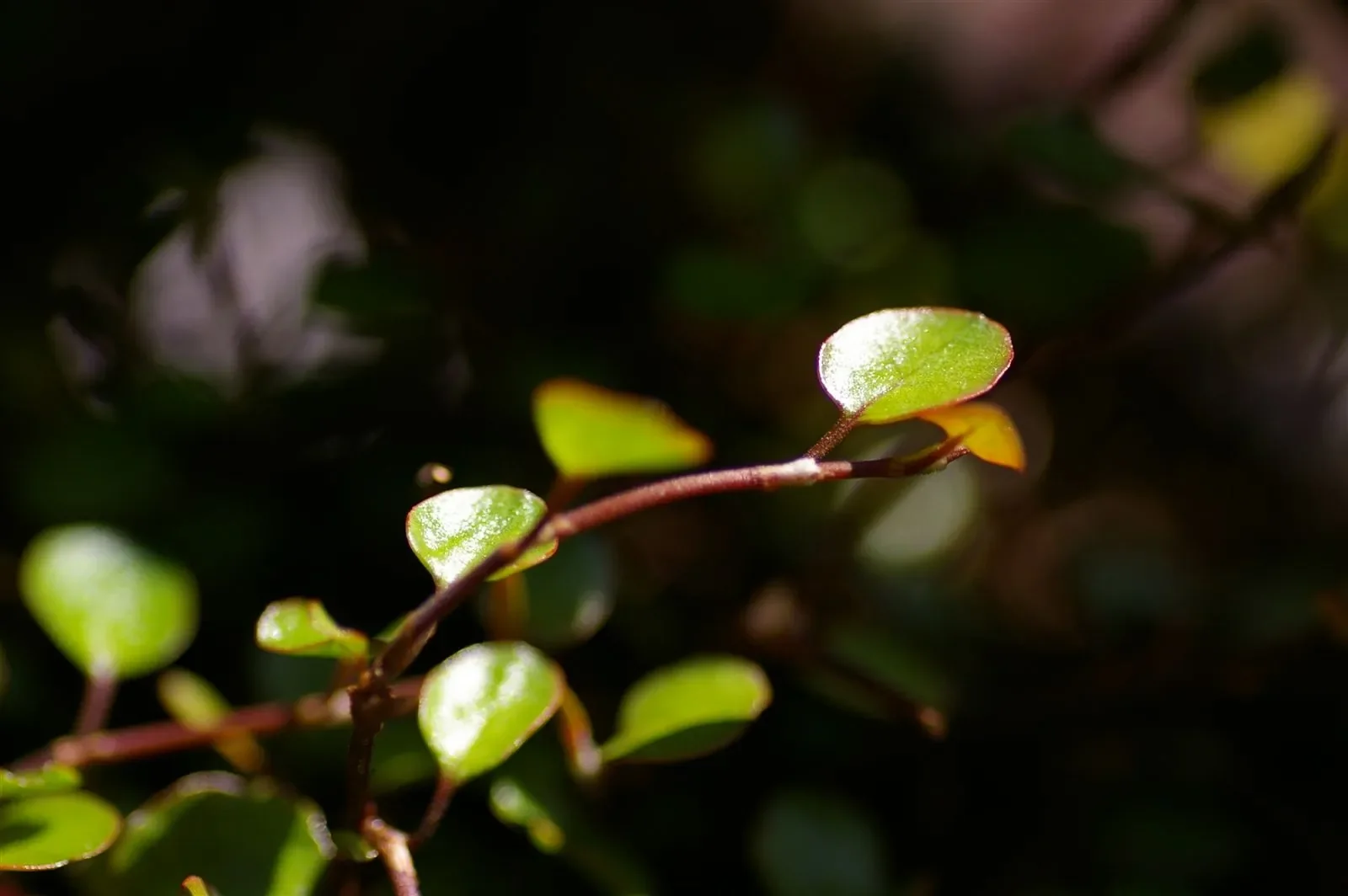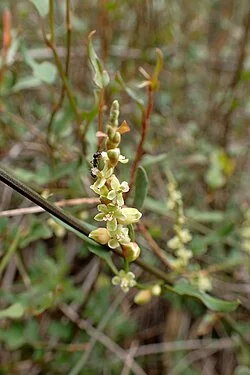
Shrubby Tororaro
Muehlenbeckia astonii
Introduction
Introduction Overview
Muehlenbeckia (Shrubby Tororaro) is a rare, divaricating shrub. See more NZ native shrubs .

Plant Description
Botanical Features
Shrubby Tororaro ( Muehlenbeckia astonii ), also known as Wiggy Wig Bush, is a distinctive deciduous shrub endemic to New Zealand. It is characterized by its dense, tangled mass of wiry, zig-zagging branches, which are often orange or maroon-black. The shrub bears small, bright green, heart-shaped leaves, typically 2-15mm wide, which often have a dent at the tip. Unlike most New Zealand plants, it is leafless in winter. In summer, it produces small green or white flowers, followed by translucent white berries with a prominent dull black, rugose nut in autumn. These fruits are edible and attract birds and lizards. It can grow up to 4 meters tall and wide, forming a sculptural shape.
Quick Facts
Quick Facts Overview
| Scientific Name | Muehlenbeckia Astonii |
|---|---|
| Height | Up to 2.5 m |
| Spread | 1-2 m |
| Water Needs | Low (very drought tolerant) |
| Light | Full sun |
| Frost Tolerance | Moderate (tolerates light frost) |
| Salt Tolerance | Moderate |
| Growth Rate | Slow to moderate |
| Lifespan | Long-lived perennial |
Climate Best Suited to
Muehlenbeckia is native to New Zealand and thrives in the country's diverse climate conditions. It adapts well to various regional climates throughout the country.
Regional Suitability
| City | Climate Suitability |
|---|---|
| Whangārei | Ideal |
| Auckland | Ideal |
| Hamilton | Ideal |
| Tauranga | Ideal |
| Rotorua | Ideal |
| Gisborne | Ideal |
| New Plymouth | Ideal |
| Napier | Ideal |
| Whanganui | Ideal |
| Palmerston North | Ideal |
| Wellington | Ideal |
| Nelson | Ideal |
| Christchurch | Ideal |
| Dunedin | Ideal |
| Invercargill | Ideal |
Natural Habitat
Natural Habitat Overview
Muehlenbeckia is naturally found in specific habitats throughout New Zealand. Understanding its natural environment helps in providing appropriate growing conditions in cultivation.
Plant Conservation
Muehlenbeckia astonii , also known as shrubby tororaro, is classified as "Nationally Endangered" in New Zealand, where it is endemic. It was previously given the IUCN rank of "Endangered" in earlier assessments.
Although it is common in cultivation around the world, it is extremely rare and threatened in its natural habitat. The species has faced significant decline due to habitat loss from land development, competition from exotic grasses, browsing animals, and fragmentation of populations. Many wild populations consist of only a few old plants with almost no seedlings, and isolated male and female plants struggle to reproduce due to the need for cross-pollination.
Soil Requirements
Muehlenbeckia prefers well-draining soil with good organic content. It can adapt to various soil types but performs best in loamy or sandy soils.
Water Needs
Muehlenbeckia requires moderate watering, especially during establishment. Once established , it becomes more drought-tolerant.
Light Requirements
Muehlenbeckia grows best in full sun to partial shade, depending on the specific species and local climate conditions.
Temperature
Muehlenbeckia is well-adapted to New Zealand's temperate climate and can tolerate both warm summers and cool winters.
Planting Guide
When to Plant
The best time to plant Muehlenbeckia is during spring or autumn when soil temperatures are moderate and rainfall is reliable.
How to Plant
Dig a hole twice the width of the root ball and slightly deeper. Place Muehlenbeckia in the hole, backfill with soil, and water thoroughly. Mulch around the base to retain moisture.
Ecological Role
Wildlife Interactions
This plant plays an important ecological role in New Zealand's native ecosystems. It provides habitat and food for native wildlife and contributes to ecosystem health and biodiversity.
Uses and Applications
Practical Applications
Muehlenbeckia has various practical and ornamental uses. From traditional Māori applications to modern landscaping, this versatile plant serves multiple purposes.
Historically, Muehlenbeckia was used by Māori for medicinal purposes, food, and cultural practices. These traditional uses reflect the deep knowledge of native plants.
Landscaping Uses
Landscaping Uses Overview
This plant is highly valued in landscaping for its aesthetic appeal and practical benefits. It can be used in various garden styles and landscape applications.
Seasonal Care
Spring
- Check for new growth and prune lightly if needed
- Mulch to retain soil moisture
Summer
- Water young plants during dry spells
- Monitor for pests
Autumn
- Collect seeds for propagation
- Remove dead wood
Winter
- Minimal care required
- Protect from severe frost if possible
Pruning
Pruning Techniques
Prune lightly in spring to maintain shape. Remove any dead or damaged branches. Avoid heavy pruning as it may reduce flowering and berry production.
How to Grow Shrubby Tororaro
Shrubby Tororaro is a rare and distinctive native New Zealand divaricating shrub, celebrated for its intricate, tangled branches and tiny, heart-shaped leaves. This critically endangered species is highly valued for its unique architectural form and its resilience in dry, exposed environments. It is an excellent choice for specialized native plant gardens, rockeries, or as a specimen plant where its unique growth habit can be appreciated. Understanding its propagation methods is key to successfully growing this important species and contributing to its conservation.
From Seed
Propagating Shrubby Tororaro from fresh seed is a viable method, though germination can be slow and may require stratification. Collect ripe seeds in autumn when they are mature. Clean the seeds thoroughly to remove any fleshy pulp. Sow the seeds in a well-draining seed-raising mix, lightly covering them. The seeds typically require a period of cold stratification (e.g., refrigerate for 2-3 months) to break dormancy. Maintain consistent moisture in the seed tray and keep it in a warm, sheltered location. Germination can take several weeks to months after stratification. Once seedlings have developed a few true leaves, they can be potted into individual containers and grown in a sheltered environment before planting out. Due to its critically endangered status, seeds are often sourced from specialized conservation nurseries.
From Cuttings
Semi-hardwood cuttings are a reliable method for propagating Shrubby Tororaro, ensuring that new plants retain the exact characteristics of the parent. Take 10-15 cm cuttings from healthy, semi-hardwood stems in late summer or early autumn. Remove the lower leaves and dip the cut end in a rooting hormone. Insert the cuttings into a well-draining propagation mix (e.g., sand and perlite). Keep the cuttings in a warm, humid environment, out of direct sunlight, perhaps under a plastic dome or in a propagator. Rooting typically occurs within 8-12 weeks. Once rooted, the new plants can be potted on and grown in a sheltered environment until they are ready for planting. This method is crucial for increasing the population of this endangered species.
Pests and Diseases
Common Pests
Muehlenbeckia is generally resistant to most pests due to its native adaptations. However, it may occasionally be affected by common garden pests such as aphids or scale insects.
Disease Prevention
To prevent diseases, ensure good air circulation around Muehlenbeckia and avoid overwatering. Remove any diseased plant material promptly to prevent spread.
Cultural Significance
Muehlenbeckia astonii , also known as shrubby tororaro, wiggy-wig, or mingimingi, holds significant cultural importance in New Zealand, particularly for Māori. It is considered a "Taonga" (treasure) and is used in "Rongoā" (traditional Māori medicine).
Key Aspects of Its Cultural Significance Include:
- Māori Traditional Knowledge and Uses: Māori recognized Muehlenbeckia astonii as an indicator of specific high-altitude environmental conditions and seasonal changes within alpine and mountain plant communities. Its resilience in challenging mountain environments was valuable for understanding alpine ecosystems. The plant was also traditionally used as a building material, notably for constructing round whare (houses) on the Titi Islands.
- Nomenclature: The plant is known by its Māori names tāpare, kāmarahou, and kāmararaunui, alongside the common name leatherwood.
- Ecological and Conservation Value: Muehlenbeckia astonii is valued as a distinctive part of New Zealand's alpine flora, showcasing unique adaptations to high-altitude environments. Its hardiness makes it suitable for restoration projects, where it aids in erosion control and habitat creation by forming dense thickets.
Bonus Tip
Expert Growing Advice
Shrubby Tororaro is a true survivor. It is one of New Zealand's few deciduous native plants, losing its leaves in winter to conserve energy. Its tangled, zig-zagging branches are thought to be a defence against browsing by moa.







